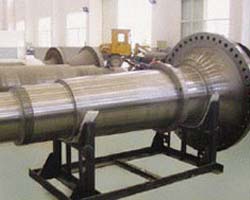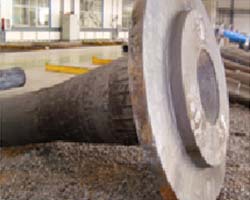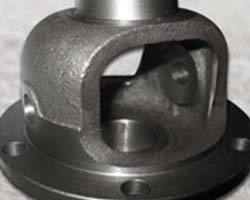With a experienced team in manufacturing processes with higher complexity, may we offer an option to the customer interested in importing cost effective parts. We can deliver serial parts or parts in small batches
| MACHINING |
| Machining operations usually divide into two categories, distinguished by purpose and cutting conditions:Roughing cuts and Finishing cuts. |
| Roughing Machine are used to remove large amount of material from the starting workpart as rapidly as possible, in order to produce a shape close to the desired form, but leaving some material on the piece for a subsequent finishing operation. |
Final Machine are used to complete the part and achieve the final dimension, tolerances, and surface finish. In production machining jobs, one or more roughing cuts are usually performed on the work, followed by one or two finishing cuts. |
 |
| FORGED PARTS |
| Forging press, often just called a press, is used for press forging. There are two main types: mechanical and hydraulic presses. |
| Mechanical presses function by using cams, cranks and/or toggles to produce a preset and reproducible stroke. Due to the nature of this type of system, different forces are available at different stroke positions. Mechanical presses are faster than their hydraulic counterparts. Their capacities range from 3 to 160 MN (300 to 18,000 short tons-force). |
Hydraulic presses use fluid pressure and a piston to generate force. The advantages of a hydraulic press over a mechanical press are its flexibility and greater capacity. The disadvantages include a slower, larger, and costlier machine to operate. |
 |
| CASTING |
| Casting is a manufacturing process by which a liquid material is usually poured into a mold, which contains a hollow cavity of the desired shape, and then allowed to solidify. The solidified part is also known as a casting, which is ejected or broken out of the mold to complete the process. Casting materials are usually metals or various cold setting materials that cure after mixing two or more components together |
 |


